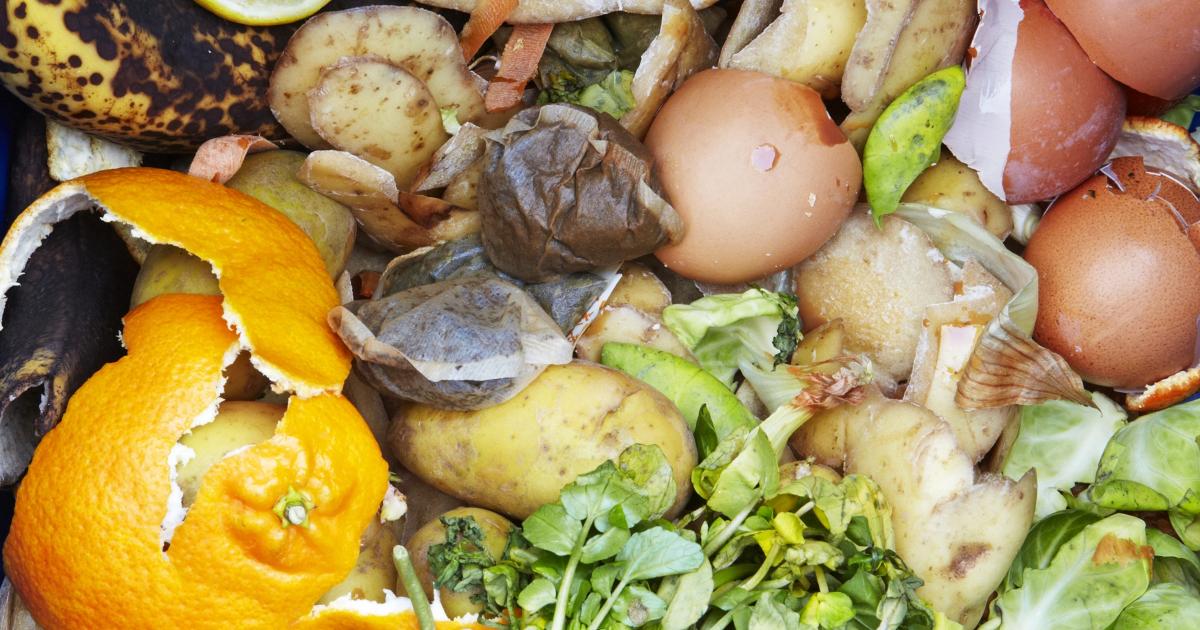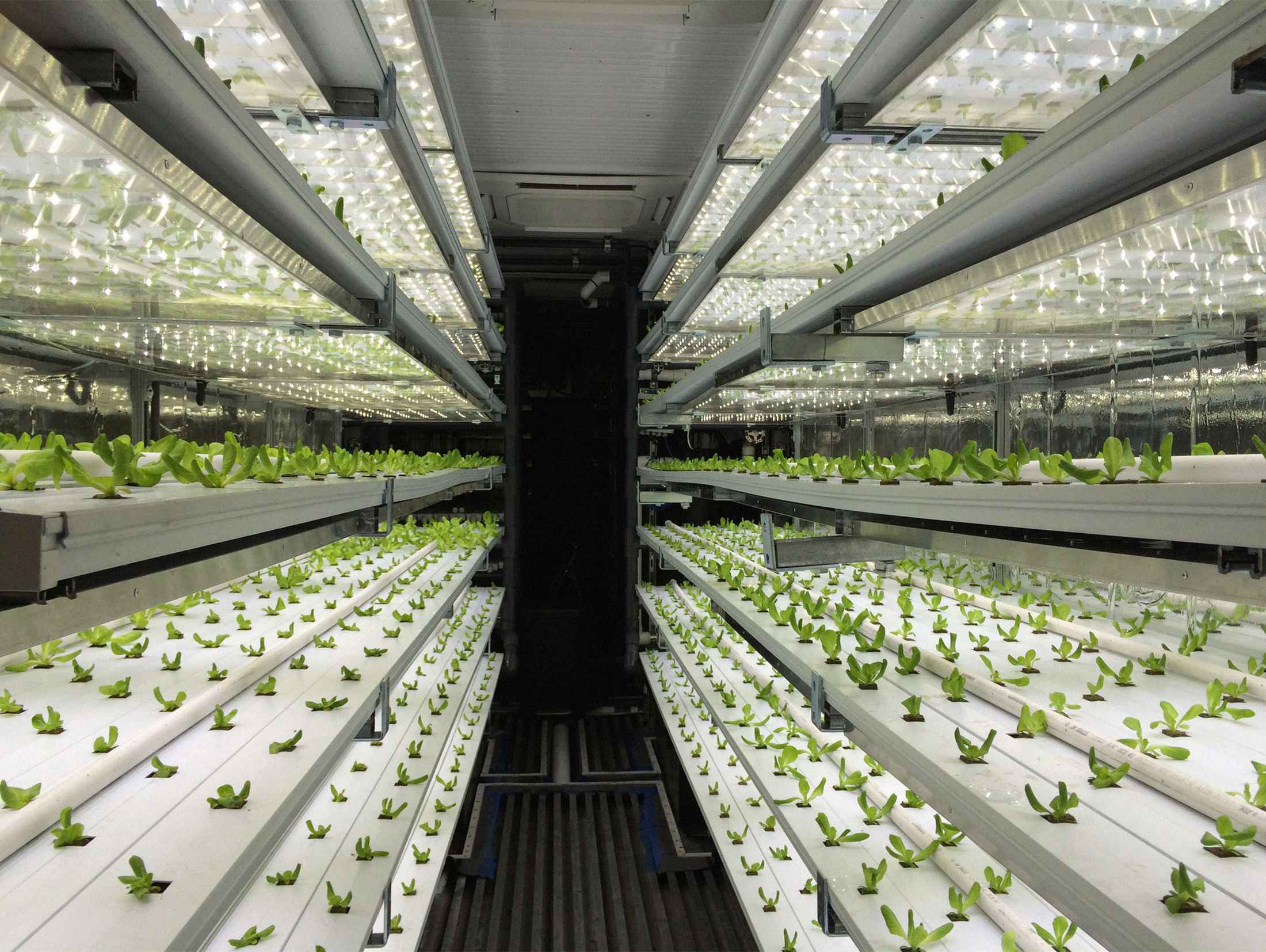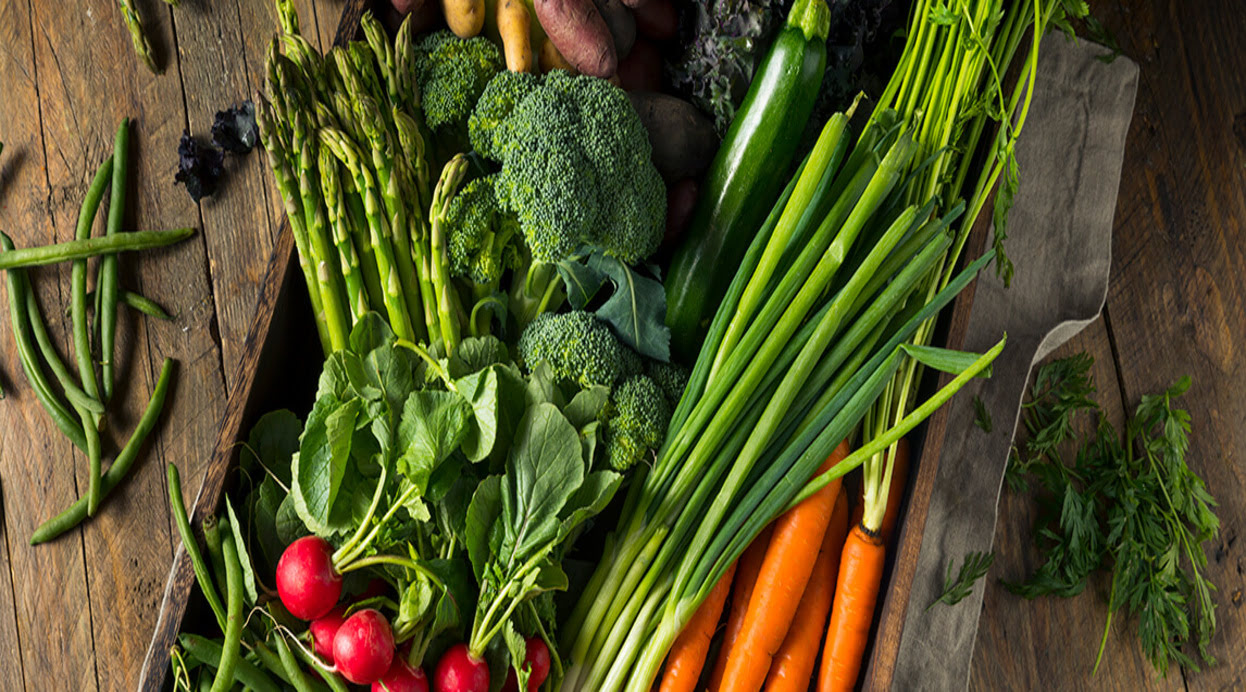Home>Gardening News and Trends>Latest News>What Food Contains Insects


Latest News
What Food Contains Insects
Modified: January 22, 2024
Discover the latest news on what food contains insects. Uncover the surprising truth about edible bugs and their nutritional benefits.
(Many of the links in this article redirect to a specific reviewed product. Your purchase of these products through affiliate links helps to generate commission for Chicagolandgardening.com, at no extra cost. Learn more)
Table of Contents
- Introduction
- Understanding Entomophagy: The Consumption of Insects
- Edible Insects from Around the World
- Nutritional Benefits of Consuming Insects
- Common Culinary Uses of Insects in Different Cultures
- Environmental and Sustainability Aspects of Insect Consumption
- Health and Safety Considerations in Eating Insects
- Legal Regulations and Guidelines for Insect-Based Food Products
- Challenges and Opportunities in Promoting Insect Consumption
- Conclusion
Introduction
When it comes to searching for alternative sources of protein, one often overlooked option lies right under our feet – insects. Although the idea of consuming insects may seem strange or even repulsive to some, it is a practice that has been embraced by many cultures around the world for centuries. In fact, entomophagy, the consumption of insects, has gained significant attention in recent years due to its potential as a sustainable and nutritious food source.
Humans have been consuming insects for thousands of years and they have played a crucial role in the diets of many indigenous communities. However, it is only recently that the Western world has started to explore the possibilities and benefits of incorporating insects into our diets.
Edible insects are incredibly diverse and can be found in various forms – from crispy fried crickets to protein-rich mealworms. They can be incorporated into a wide range of dishes, from snacks and appetizers to main courses and desserts.
Not only are insects rich in essential nutrients like protein, healthy fats, vitamins, and minerals, but they also have a significantly lower environmental impact compared to traditional livestock. Insects require less land, water, and feed to produce the same amount of protein, making them a sustainable option to help tackle the growing global food crisis.
While the idea of consuming insects might be met with skepticism or hesitation, it is important to explore the potential benefits and challenges associated with insect consumption. In this article, we will delve into the world of entomophagy, examining the various types of edible insects, their nutritional benefits, cultural practices around the globe, sustainability aspects, health and safety considerations, legal regulations, and the challenges and opportunities in promoting insect consumption.
So, if you are ready to expand your culinary horizons and embrace a new source of sustainable protein, join us as we explore the fascinating world of insect-based food!
Understanding Entomophagy: The Consumption of Insects
Entomophagy, derived from the Greek words “entomon” (insect) and “phagein” (to eat), refers to the practice of consuming insects. While the thought of eating bugs may elicit mixed reactions, entomophagy has deep historical and cultural roots around the world.
Humans have been consuming insects for thousands of years. In fact, more than 2,000 species of insects are known to be consumed by various cultures globally, including beetles, crickets, grasshoppers, mealworms, and silkworms, to name a few.
Indigenous communities in countries such as Mexico, Thailand, and Madagascar have long embraced the tradition of eating insects as part of their diet. Insects serve as a valuable source of nutrition and protein, especially in areas where resources may be scarce.
Entomophagy offers numerous benefits, not only in terms of nutrition but also in terms of sustainability. Insects are highly efficient at converting feed into edible protein, requiring significantly less resources than traditional livestock. For instance, livestock such as cattle require large amounts of food, water, land, and produce greenhouse gases. On the other hand, insects are cold-blooded, meaning they do not require as much energy to maintain their body temperature, resulting in far less environmental impact.
In addition to their low environmental impact, insects are also rich in nutrients. They are excellent sources of protein, vitamins, minerals, and healthy fats. For example, mealworms contain around 20 grams of protein per 100 grams, which is comparable to many meat products. They are also rich in essential amino acids, omega-3 fatty acids, and vitamins such as B12.
Furthermore, the versatility of insects in culinary applications is impressive. They can be incorporated in various ways, from being used as an ingredient in traditional dishes to being ground into powder and used as a protein-rich additive in recipes such as energy bars, smoothies, and baked goods.
With increasing global concerns over food security and sustainability, entomophagy has garnered attention as a potential solution. The United Nations Food and Agriculture Organization (FAO) has highlighted the importance of insects as an alternative protein source to combat hunger and reduce the impact of conventional agriculture on the environment.
As entomophagy gains traction in the Western world, there are still challenges to be addressed. Changing societal attitudes and overcoming cultural barriers are key aspects to consider. Nonetheless, as more research supports the nutritional and environmental benefits of entomophagy, there is growing interest and innovation in incorporating insects into our diets.
In the following sections, we will explore the various types of edible insects found around the world, their nutritional benefits, common culinary uses, environmental aspects, health and safety considerations, legal regulations, and the challenges and opportunities associated with promoting insect consumption.
Edible Insects from Around the World
When it comes to edible insects, the diversity is astounding. Across different regions and cultures, a wide variety of insects are consumed, each with its own unique flavor and texture. Let’s take a look at some of the most commonly consumed edible insects from around the world.
In many countries in Asia, insects have long been a part of traditional cuisine. In Thailand, for example, fried crickets and silk moth larvae are popular street food snacks. These crunchy and flavorful insects are often seasoned with spices and served as a protein-packed snack.
In Japan, the practice of consuming insects dates back centuries. One notable delicacy is the “zaza-mushi,” or giant water bug. These large insects are typically prepared by simmering or grilling and are known for their rich umami flavor.
In Mexico, chapulines, or grasshoppers, are a staple ingredient in traditional dishes. They are often seasoned with chili and lime, giving them a tangy, spicy taste. The appeal of chapulines extends beyond Mexico, with these crunchy insects becoming popular in some western culinary scenes.
Another widely consumed edible insect is the mealworm. Mealworms are the larval stage of the darkling beetle and are widely available in many parts of the world. They have a mild, nutty flavor and a slightly crispy texture. Mealworms can be used in a variety of dishes, from stir-fries and salads to pasta and baked goods.
In Africa, termites are a common source of protein. These winged insects are typically harvested during the rainy season and can be consumed in various ways. They are often roasted or fried and have a crunchy texture with a nutty, earthy flavor.
Many other edible insects are consumed in different parts of the world. These include beetles, ants, bees, silkworm pupae, and even scorpions. Each insect offers its own unique taste and culinary experience.
As insect consumption gains popularity, there is an increasing interest in incorporating insects into familiar foods. Insect-based protein powders, for example, are used as an ingredient in energy bars, protein shakes, and baked goods. This allows individuals to enjoy the nutritional benefits of insects in a more convenient and familiar form.
It’s important to note that not all insects are suitable for consumption. Some may carry potential health risks or have natural toxins. Therefore, it’s crucial to source edible insects from reliable sources and follow proper preparation and cooking techniques.
In the next section, we will explore the nutritional benefits of consuming insects and understand why they are considered a nutritious food source.
Nutritional Benefits of Consuming Insects
When it comes to nutrition, insects are more than just a novelty food. They offer a wide range of essential nutrients that can contribute to a well-rounded diet. Let’s delve into the nutritional benefits of consuming insects.
First and foremost, insects are an excellent source of protein. Protein is essential for growth, repair, and maintenance of body tissues. Insects can be just as protein-rich, if not more, than traditional meat sources. For example, crickets contain approximately 20 grams of protein per 100 grams, which is comparable to beef and chicken.
Insects are also a good source of healthy fats. They contain monounsaturated and polyunsaturated fats, such as omega-3 fatty acids, which are beneficial for heart health and cognitive function.
In addition to protein and healthy fats, insects are also rich in vitamins and minerals. They provide essential vitamins like B vitamins (including B12), which are important for energy metabolism and brain health. They also contain minerals such as iron, calcium, zinc, and magnesium, which play vital roles in various bodily functions.
Moreover, insects are highly nutritious while being comparatively low in calories. This makes them an ideal choice for individuals looking to maintain a healthy weight or those seeking nutrient-dense food options.
One of the main benefits of consuming insects is their sustainability. Insects are incredibly efficient at converting feed into edible protein, requiring fewer resources compared to traditional livestock. They emit fewer greenhouse gases and require less land, water, and feed production, making them an environmentally friendly option amidst growing concerns about the impact of animal agriculture.
Another advantage of incorporating insects into our diets is their potential to address global food insecurity. With the world’s population projected to reach 9 billion by 2050, finding sustainable protein sources is crucial. Insects provide a viable solution due to their abundance, ease of breeding, and minimal resource requirements.
Furthermore, the versatility of insects in culinary applications allows for creativity in the kitchen. They can be used in a wide range of dishes, from snacks and appetizers to main courses and desserts. Insect flour and protein powders can also be used in various recipes, including smoothies, energy bars, and baked goods.
While insects offer numerous nutritional benefits, it’s essential to consider sourcing them from reputable sources. Proper farming practices ensure the safety and quality of edible insects, minimizing any potential health risks. As the popularity of edible insects grows, regulations are being established to ensure the safety and traceability of insect-based food products.
Now that we’ve explored the nutritional advantages of consuming insects, let’s move on to the next section, where we’ll delve into the common culinary uses of insects in different cultures.
Common Culinary Uses of Insects in Different Cultures
While the idea of incorporating insects into our diet may be relatively new in some parts of the world, many cultures have long embraced the culinary use of insects. Let’s explore the common culinary uses of insects in different cultures around the globe.
In Thailand, insects are a popular street food snack. Vendors sell fried insects such as crickets, grasshoppers, and silkworm pupae, often seasoned with spices like chili, salt, and lime. These crispy and savory snacks are enjoyed by locals and adventurous tourists alike.
In Mexico, insects have been a part of traditional cuisine for centuries. One of the most well-known examples is chapulines, or grasshoppers, which are commonly consumed in Oaxaca. They are often toasted and seasoned with chili and lime, offering a tangy and spicy flavor. Chapulines are used in various dishes, including tacos, soups, and even as a topping for guacamole.
In Japan, insects are incorporated into traditional dishes like “mino,” which is made from wasp larvae. These larvae are pickled and have a unique, tangy taste. Another example is the “hachinoko,” or bee larvae, which have a slightly sweet and nutty flavor. These delicate and exotic ingredients are often enjoyed as a delicacy.
Across many African countries, termites are a common source of protein. They are often harvested during the rainy season when they emerge from the ground. Termites can be prepared in various ways, including frying, roasting, or sautéing. They are prized for their nutty and slightly earthy flavor, adding depth and protein to stews, soups, and other traditional dishes.
In Australia, the indigenous population incorporates witchetty grubs, the larvae of the cossid moth, into their traditional cuisine. These creamy larvae are often eaten raw or lightly cooked and have a distinct and rich nutty flavor. They are valued for their high protein content and are consumed as a source of sustenance and cultural significance.
While these examples highlight the diversity of culinary uses across cultures, it’s important to note that insects are not limited to savory dishes. Insects can also be incorporated into sweet treats and desserts. For example, in some Southeast Asian countries, ant eggs are used to add a unique and delicate flavor to sweets like rice cakes and puddings.
As the acceptance and popularity of insect-based foods grow, chefs and food entrepreneurs worldwide are experimenting with new and innovative ways to incorporate insects into their culinary creations. From insect-based protein bars to cricket flour pasta, the possibilities are expanding, contributing to the overall acceptance and normalization of entomophagy.
With such a diverse array of edible insects and culinary uses across cultures, it’s clear that insects have the potential to be an exciting and versatile ingredient in the global food scene.
In the next section, we will explore the environmental and sustainability aspects of insect consumption.
Environmental and Sustainability Aspects of Insect Consumption
As the world faces pressing environmental challenges and seeks sustainable solutions, exploring alternative food sources becomes crucial. Insects offer a promising solution due to their low environmental impact and resource efficiency. Let’s delve into the environmental and sustainability aspects of insect consumption.
One of the key advantages of consuming insects is their low ecological footprint. Compared to traditional livestock, insects require significantly less land, water, and feed to produce the same amount of protein. For example, crickets require six times less feed than cattle and produce significantly fewer greenhouse gas emissions.
Insects are highly efficient at converting feed into edible protein, making them a sustainable alternative. They have a higher feed conversion rate, meaning they can produce more protein using fewer resources. This is especially important as the global population continues to grow, and the demand for protein escalates.
Furthermore, insects can be raised on organic waste and byproducts, reducing the burden on landfills and contributing to a circular economy. They can convert agricultural byproducts, such as beetles feeding on fruit peels or mealworms consuming grain waste, into valuable protein sources.
Insect farming also requires less water compared to traditional livestock. For instance, crickets need only a fraction of the water that cattle or poultry require to produce the same amount of protein. This can have a significant impact on water conservation, especially in regions facing water scarcity.
In addition to their resource efficiency, insects can contribute to biodiversity conservation. As habitat destruction and climate change threaten many species, creating insect-friendly ecosystems can support the survival of valuable pollinators and contribute to the overall health of ecosystems.
Furthermore, insect farming can be practiced in urban environments, utilizing vertical farming techniques, reducing the need for transportation and minimizing the carbon footprint associated with long-distance food distribution.
While insect consumption can offer significant environmental benefits, it is essential to consider the sustainability of insect farming practices. Care must be taken to ensure responsible farming techniques, such as proper waste management, disease control, and ethical treatment of insects. Efforts are being made to develop sustainable farming methods, including improved feed formulations and optimizing insect growth conditions.
Overall, the environmental and sustainability aspects of insect consumption make it an appealing option for addressing the challenges of food security, resource scarcity, and climate change. Insects provide a more efficient and environmentally friendly alternative to traditional livestock production systems.
Now that we’ve explored the environmental advantages of insect consumption, let’s move on to the next section, where we’ll discuss the health and safety considerations in eating insects.
Health and Safety Considerations in Eating Insects
As the consumption of insects gains traction, it is important to address health and safety considerations associated with incorporating these alternative protein sources into our diets. Although insects are generally safe for consumption, there are certain factors that need to be taken into account.
One primary concern is ensuring that edible insects are sourced from reliable and reputable suppliers who follow proper hygiene and farming practices. Responsible insect farming, whether for human consumption or as animal feed, involves maintaining clean and controlled environments to minimize the risk of contamination or disease transmission.
Purchasing insect-based products from reputable manufacturers ensures that proper processing and quality control measures are in place, reducing the risk of foodborne illnesses. Just like with any other food product, it is essential to check for any certifications or regulatory approvals when buying insect-based food items.
Another crucial consideration is the potential for allergic reactions. Insects are a source of novel proteins, and individuals with known allergies to shellfish or dust mites may also be at risk of developing an allergic reaction to insects. Individuals with allergies should exercise caution and consult with a healthcare professional before incorporating insects into their diet.
Proper preparation and cooking methods are key to ensuring the safety of consuming insects. Cooking insects thoroughly helps eliminate potential pathogens and parasites that may be present. Most edible insects are commonly sold dried, which helps prolong their shelf life and reduce the risk of contamination. However, it is crucial to follow specific cooking guidelines for different insect species to ensure safety.
It is also important to consider the source of insects. In the wild, insects may come into contact with pesticides or contaminants, which can potentially pose health risks if consumed. Opting for farmed insects that are reared in controlled environments can help mitigate these concerns.
When introducing insects into your diet for the first time, it is advisable to start with small quantities to assess any individual sensitivities or reactions. Additionally, it’s worth noting that insects are a different source of nutrients compared to traditional animal-based proteins, and their digestion may vary from person to person. Consulting with a healthcare professional or nutritionist can provide personalized advice and guidance when incorporating insects into your diet.
It is crucial to stay informed about the latest research and guidelines regarding insect consumption. Regulatory bodies and organizations are continually evaluating and updating guidelines to ensure the safety of the growing insect-based food industry.
By adhering to recommended safety practices, sourcing edible insects from reliable providers, and being aware of potential allergies or individual sensitivities, it is possible to incorporate insects into our diets safely and enjoy the nutritional benefits they offer.
Now that we’ve explored the health and safety considerations, let’s move on to the next section, where we’ll discuss the legal regulations and guidelines for insect-based food products.
Legal Regulations and Guidelines for Insect-Based Food Products
As interest in insect-based food products grows, it is essential to understand the legal regulations and guidelines that govern their production, labeling, and sale. While regulations may vary across countries and regions, there are trends and recommendations emerging to ensure the safety and integrity of insect-based food products.
Many regulatory bodies, such as the European Food Safety Authority (EFSA) and the United States Food and Drug Administration (FDA), have been evaluating the safety of edible insects and establishing guidelines for their commercial use.
In the European Union, for example, the Novel Food Regulation (EU) 2015/2283 provides a framework for assessing novel foods, including insects, for their safety and suitable use in the EU market. This regulation ensures that new or unconventional food sources meet specific safety requirements before they can be introduced to consumers.
Similarly, the FDA regulates the use of insects in food products in the United States. Insect-based food products must comply with labeling requirements, including accurate ingredient lists and allergen declarations.
Various countries have their own specific regulations and guidelines for insect consumption. Some explicitly list approved edible insect species, while others follow general food safety regulations that apply to all food products.
In addition to regulations, there are certification programs and quality standards that offer reassurance to consumers, signaling that insect-based products meet specific criteria. For example, the Good Manufacturing Practices (GMP) certification ensures that consistent quality control measures are in place during the manufacturing and processing of insect-based food items.
Furthermore, some organizations, like the Food and Agriculture Organization of the United Nations (FAO) and the Global Food Safety Initiative (GFSI), provide guidance documents and standards for the production, processing, and safety of edible insects. These guidelines help ensure the hygienic production of insects and promote good agricultural and farming practices.
As the insect-based food industry continues to evolve, it is expected that more comprehensive and harmonized regulations will be established to address the specific challenges and characteristics of this emerging sector.
It is important for individuals and companies involved in insect-based food production to stay up to date with the latest regulatory developments and seek compliance with the appropriate guidelines. This helps to build consumer trust, promotes food safety, and contributes to the overall growth and acceptance of the insect-based food market.
Now that we have discussed the legal regulations and guidelines for insect-based food products, let’s move on to the next section, where we will explore the challenges and opportunities in promoting insect consumption.
Challenges and Opportunities in Promoting Insect Consumption
While the consumption of insects offers numerous benefits, there are both challenges and opportunities in promoting their incorporation into mainstream diets. Let’s explore some of the key challenges and opportunities surrounding insect consumption.
One of the primary challenges is overcoming the cultural stigma and ingrained attitudes towards consuming insects. In many Western cultures, insects are often associated with pests and filth rather than being considered as a food source. Educating the public about the nutritional benefits, sustainability advantages, and the long history of insect consumption in other cultures can help challenge these preconceptions and foster acceptance.
In addition to cultural barriers, the availability and accessibility of edible insects can pose a challenge. While insects are consumed widely in certain countries, they may be harder to find or more expensive in other regions. Establishing reliable supply chains and scaling up insect farming operations can help increase availability and make insect-based products more accessible to consumers.
Marketing and branding also play a vital role in promoting insect consumption. Developing appealing and consumer-friendly packaging, clear labeling, and transparent sourcing information can help build trust and facilitate consumer acceptance of insect-based products. Creative marketing strategies, such as highlighting their nutritional value, environmental benefits, and versatility in culinary applications, can also help generate interest and change perceptions.
Regulatory frameworks can both present challenges and opportunities for the insect-based food industry. While regulations ensure consumer safety and quality control, navigating complex and varying regulations across different countries can pose logistical hurdles for manufacturers and suppliers. Harmonizing regulations and establishing clear guidelines specific to insects can create a more favorable landscape for the development and growth of the industry.
However, despite the challenges, there are significant opportunities to promote insect consumption. Increasing consumer awareness about the environmental impact of traditional protein sources and the benefits of incorporating insects into our diets can drive interest and demand for insect-based products.
Innovations in food technology provide an opportunity to develop new and exciting insect-based food products. From insect flour used as an ingredient in baked goods to protein bars and snacks made from sustainable insect sources, there is room for creativity and culinary exploration.
Collaborations and partnerships between researchers, chefs, and food entrepreneurs can also drive innovation and product development in the insect-based food industry. By leveraging the expertise of different fields, novel and appealing insect-based food products can be introduced to the market.
Furthermore, fostering a sustainable food system and addressing the challenges of food security and environmental impact require a shift in dietary patterns. Insect consumption offers a potential solution by providing a protein-rich, resource-efficient alternative to traditional livestock. By positioning insects as a sustainable protein source, there is an opportunity to contribute to a more balanced and sustainable global food system.
As societal attitudes continue to shift towards more sustainable and inclusive food choices, the promotion of insect consumption presents a unique opportunity to address environmental, health, and food security challenges.
In the next section, we will conclude our exploration of the world of insect-based food and reflect on the key takeaways from this journey.
Conclusion
Exploring the world of insect-based food has revealed a fascinating and promising avenue for sustainable nutrition. Entomophagy, the consumption of insects, offers numerous benefits, from their rich nutritional profile to their low environmental impact compared to traditional livestock.
Throughout this journey, we have learned about the wide range of edible insects found around the world, each with its own unique flavor and culinary uses. From fried crickets in Thailand to chapulines in Mexico and termites in Africa, insects have long been a part of traditional cuisines in various cultures.
Beyond their cultural significance, insects offer substantial nutritional benefits. They are packed with protein, healthy fats, vitamins, and minerals, providing a well-rounded source of nutrients. Insects can be incorporated into a wide array of dishes, from savory snacks to sweet delicacies, expanding the culinary landscape and offering new options for creative cooking.
Embracing insect consumption comes with its share of challenges, including cultural stigma, availability, and navigating regulatory frameworks. However, with education, marketing, and collaboration among stakeholders, these challenges can be overcome, paving the way for a more sustainable food future.
The environmental and sustainability aspects of insect consumption cannot be ignored. Insects require fewer resources, emit fewer greenhouse gases, and have a smaller ecological footprint compared to traditional livestock. By incorporating insects into our diets, we can contribute to biodiversity conservation, reduce the strain on land and water resources, and work towards a more sustainable and resilient food system.
However, promoting insect consumption also necessitates addressing health and safety considerations. Ensuring proper sourcing, processing, and cooking techniques, as well as being mindful of potential allergies, are integral to enjoying insects safely.
In conclusion, edible insects have the potential to revolutionize the way we think about food. By embracing entomophagy, we can harness the nutritional benefits, environmental advantages, and cultural richness that insects offer. With ongoing research, innovation, and collaboration, we can create a future where insects play a meaningful role in meeting global food challenges, fostering sustainability, and nourishing both our bodies and the planet.







